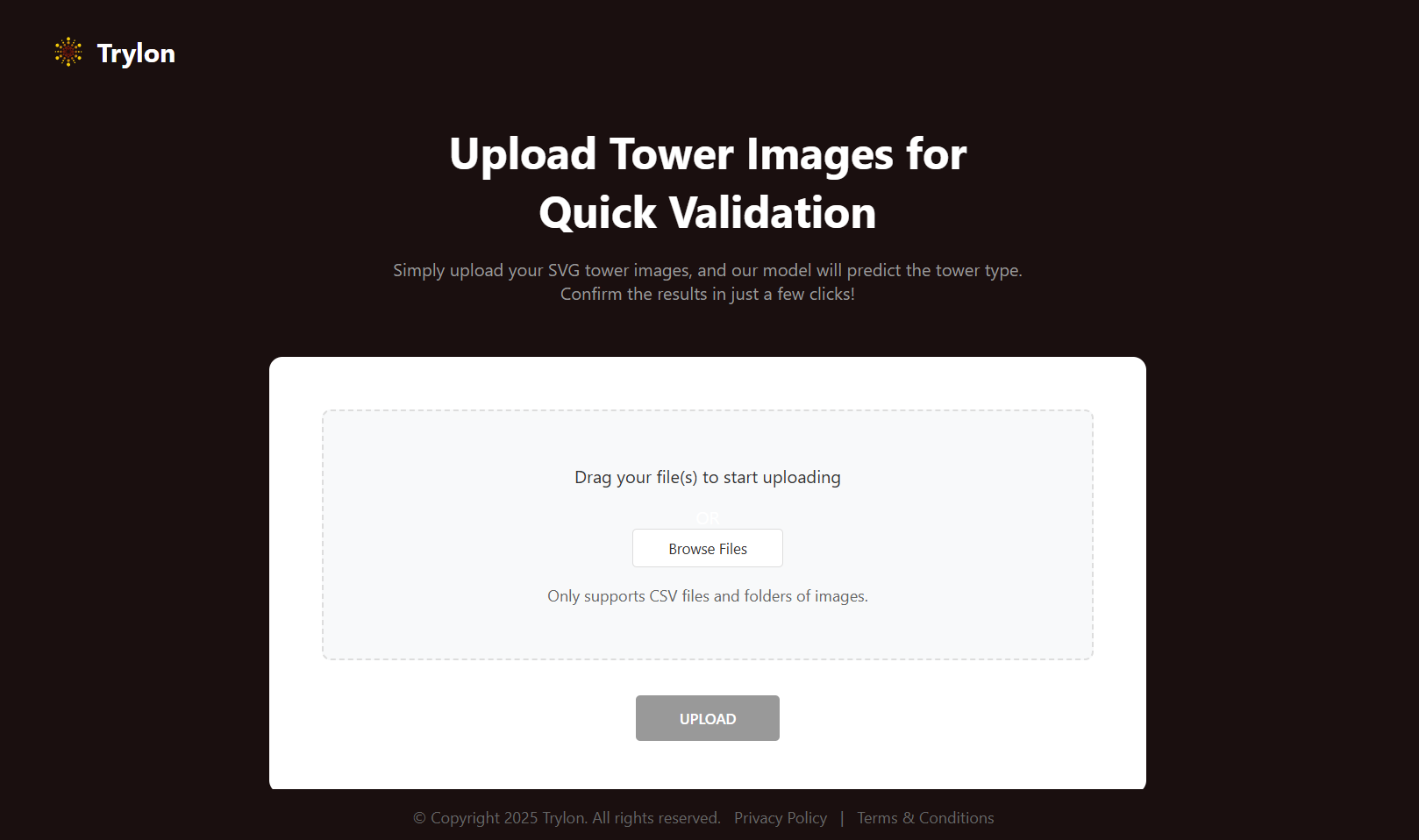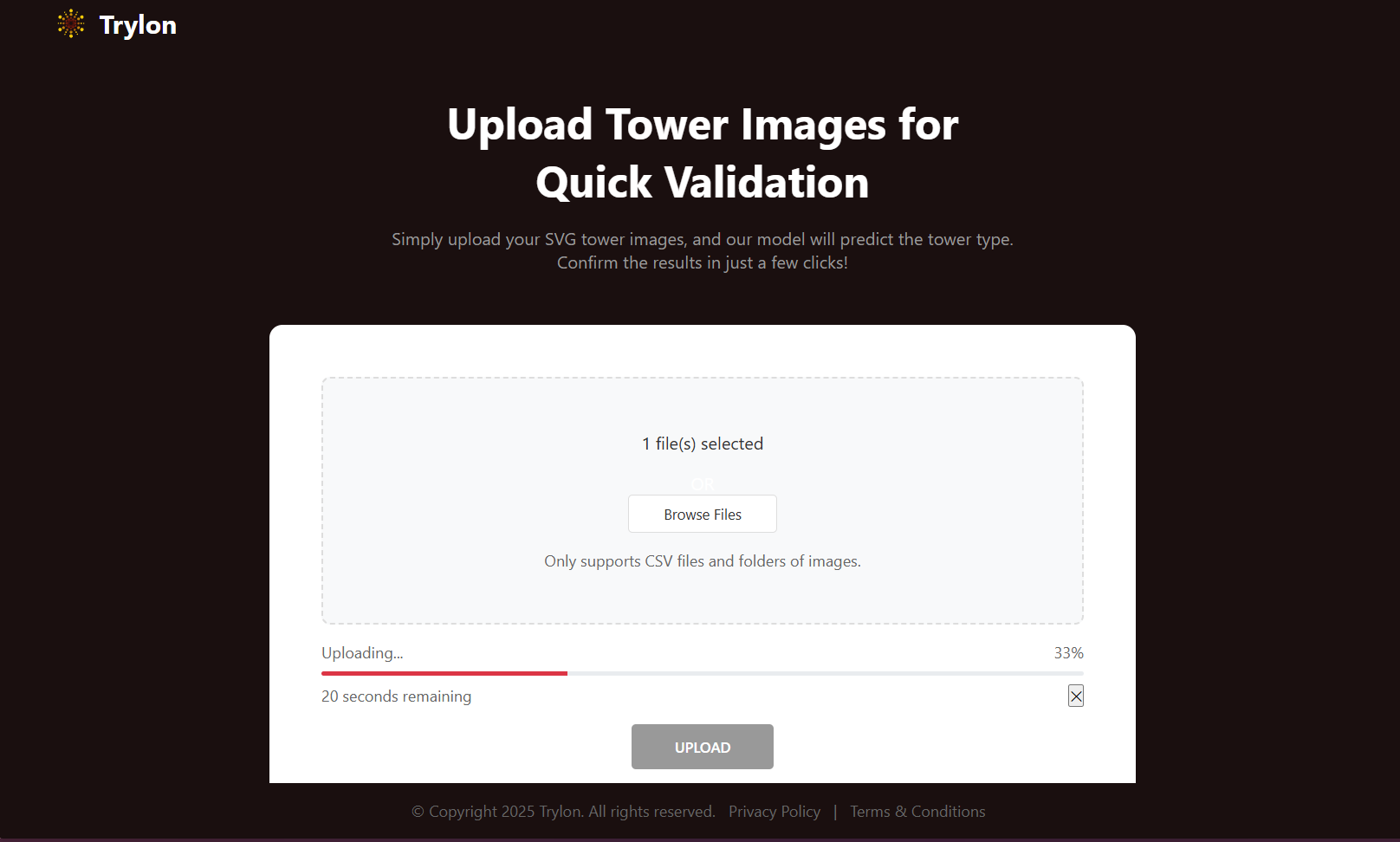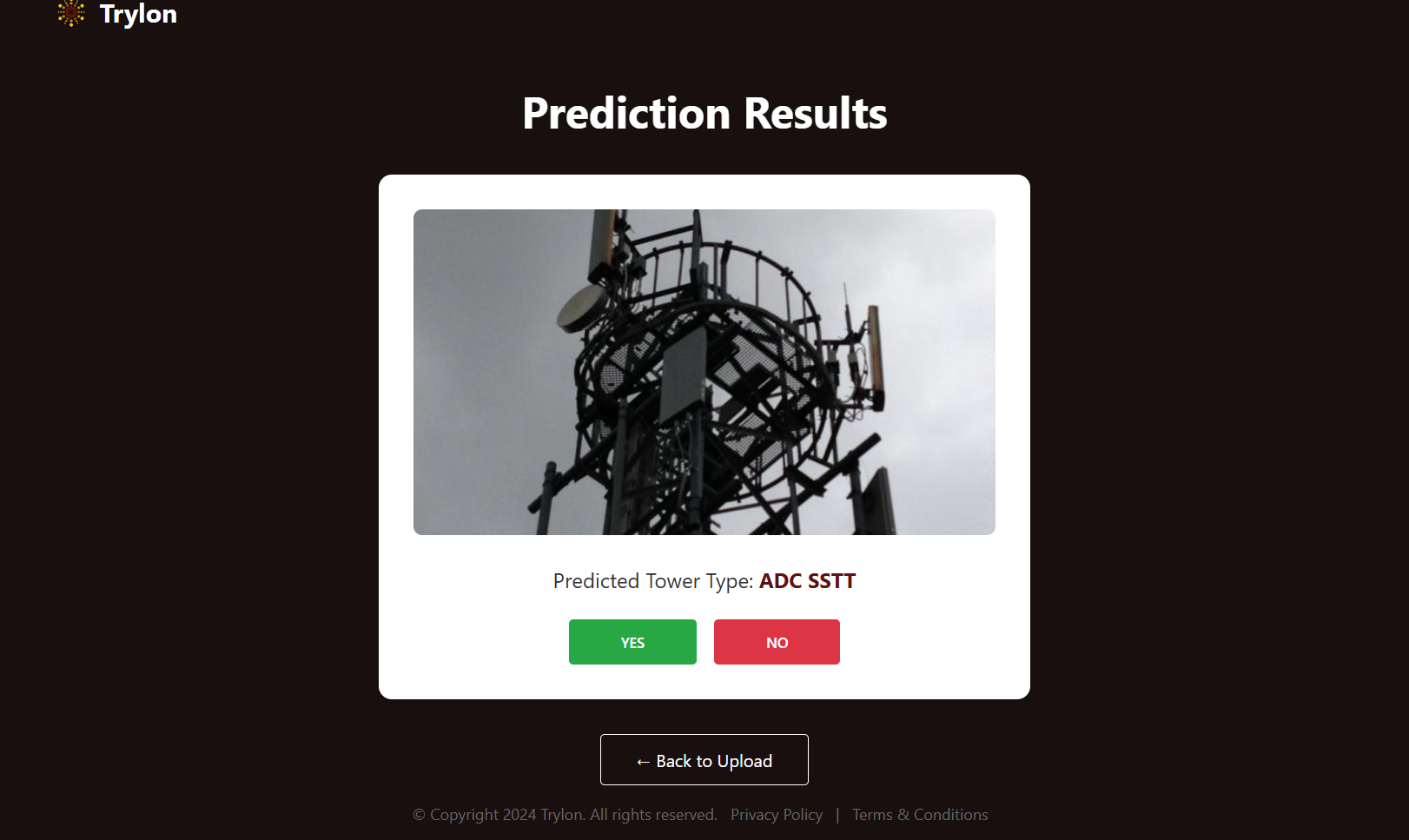Tower Model Prediction
Trylon, a leader in telecommunications infrastructure, required an automated solution to identify tower models from thousands of field images captured by engineers during site visits. The traditional manual process of sorting, labeling, and identifying tower types was time-consuming, error-prone, and significantly delayed downstream operations like quoting and compliance documentation. The client needed a system that could:
- Automatically classify different tower types from images.
- Reject irrelevant or non-informative images (junk data).
- Provide predictions quickly through a user-friendly interface.
- Work seamlessly with images extracted from structured Excel field reports.
How Calbyte Helped
Calbyte worked closely with Trylon’s engineering and project management teams to design and deploy a complete AI-powered web application that streamlined their tower identification workflow. We developed a robust backend pipeline for intelligent image extraction, classification, and filtering, and integrated it into a lightweight web-based user interface tailored to their operational needs.
Our contributions included:
- Designing a tower classification model trained on thousands of annotated tower images.
- Creating a junk detection subsystem to eliminate unusable inputs.
- Building a full-stack web application that allowed image and Excel uploads, processed predictions, and returned labeled results within minutes.
- Ensuring the solution was lightweight enough to be deployed both on-premises and in the cloud.
The Solution
The final system is a modular AI-powered prediction pipeline wrapped inside a Flask web application. Users can upload either:
- Field Excel sheets (from engineers) containing embedded tower images, or
- Direct image folders from field visits.
The application performs the following steps:
- Image Extraction: Extracts images from relevant sheets (
Structure Photo Records,Rigging Photo Records) usingpandasandopenpyxl. - Image Filtering: Applies a One-Class SVM model to filter out non-tower or junk images.
- Tower Model Prediction: Runs a deep learning classifier (PyTorch) on filtered images to identify the correct tower model.
- Results Display: Returns prediction results (with associated image files) through a web dashboard.
Tech Stack
- Backend Framework: Python, Flask
- ML Models:
- Tower Classifier: CNN (Convolutional Neural Network) using PyTorch (
best_model.pth) - Junk Detection: One-Class SVM (
one_class_svm_model.pkl)
- Tower Classifier: CNN (Convolutional Neural Network) using PyTorch (
- Data Extraction:
pandas,openpyxlfor Excel parsing - Frontend: Jinja2 templating with HTML/CSS
- Hosting: Lightweight enough for deployment on local servers or cloud VMs
Outcome
- Time Savings: Reduced tower identification time from hours to minutes per report.
- Accuracy: High-confidence predictions with automatic junk rejection improved data quality.
- Scalability: The modular design allows future extension to new tower types and use cases.
- Usability: Field teams can now upload Excel reports or image folders directly, eliminating the need for specialized tools.



